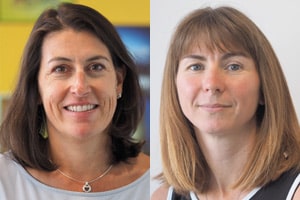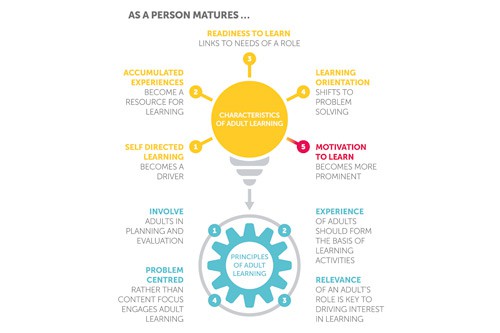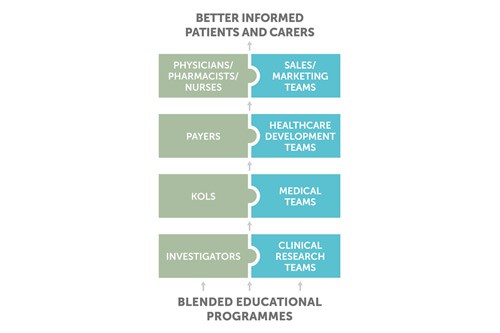 Learning and education play a fundamental role in effective patient care. Better adherence to treatment and outcomes are strongly tied to a sound understanding of the critical aspects of a disease and its diagnosis and management from all stakeholders. Knowing the individual patient types and healthcare service that impact on receipt and delivery of care can further improve treatment and outcomes.
Learning and education play a fundamental role in effective patient care. Better adherence to treatment and outcomes are strongly tied to a sound understanding of the critical aspects of a disease and its diagnosis and management from all stakeholders. Knowing the individual patient types and healthcare service that impact on receipt and delivery of care can further improve treatment and outcomes.
The education of all stakeholders throughout the life cycle of any treatment, from discovery to prescription, is therefore key to how much impact this treatment will have on outcomes. In the world of healthcare, this does not start and finish with sales teams and healthcare professionals. The learning and education remit should be much greater if you want your drug to achieve the desired outcomes with the right patients.
Identifying the stakeholders you need to engage with is only step one; how you develop educational tools to support learning is critical to ensure the target audience is engaged and motivated to learn.
In 1980, the American educator Malcom Knowles identified four assumptions that distinguished adult learning (andragogy) from child learning (Figure 1). In 1984 he added a fifth – internal motivation – and went on to suggest four principles that should be applied to the design and delivery of any adult learning programme.

Figure 1: Principles of adult learning (Knowles 1984)
As people mature, their internal motivation to learning is key and learning becomes less push and more pull. The educational teams at Sudler (comprising Sudler Transart and Sudler Medical Communications) create and deploy each one of their learning solutions using these theoretical principles. By working in tandem, the two teams develop blended learning solutions and programmes that recognise and engage with the role-specific needs of each stakeholder, while keeping the patient at the core.
Through delivery of novel interactive and engaging learning tools, each stakeholder can obtain the knowledge required to drive better patient outcomes. By dovetailing the internal company healthcare team’s knowledge (developed primarily by Sudler Transart) with healthcare professional education (developed primarily by Sudler Medical Communications), learning can be translated into better-informed discussions and can support the integration of all stakeholders (Figure 2).

Figure 2: Dovetailing internal and external knowledge drives better patient care
This overarching approach of educating all stakeholders through andragogy ensures that, at each step, every member of a healthcare multidisciplinary team will become better informed about their patients’ needs and the support they require to provide access to the right drugs at the right time, and to answer questions on disease, compliance and use of drugs. Ultimately, these better-informed stakeholders will drive better patient care and improved patient outcomes.
Karen Williams is head of Transart, e: karen.williams@transart.co.uk, t: +44 (0)7879 893 080. Abbie Pound is head of Sudler Medical Communications, e: abbie.pound@sudler.com, t: +44 (0)7824 365 952





